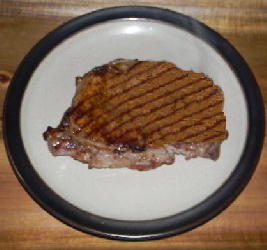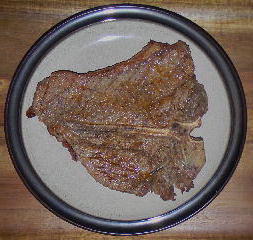

































 Cast Iron Cookware: Cast iron cookware is extremely versatile and it can be used on the stovetop or inside the oven. A properly well-seasoned cast iron pot is nonstick and it could last a lifetime if properly maintained. However, it is extremely heavy, it takes longer to heat up, it takes longer to cool down, it can be very challenging to clean if food sticks to the pot, it needs to have its oil coating periodically refreshed, and it can rust if stored in a humid environment. It is also very difficult to use a cast iron skillet to flip food over because of its weight. Cast iron pots have cast iron handles and they heat up just like the pot. Therefore you must use a kitchen mitten when you want to move or adjust a hot cast iron pot. However, one or two cast iron cookware pieces can be extremely useful to a gourmet cook. "Lodge" is an American family-owned company that makes high quality factory-seasoned cast iron cookware. If you invest in cast iron cookware then learn how to take care of it.
Cast Iron Cookware: Cast iron cookware is extremely versatile and it can be used on the stovetop or inside the oven. A properly well-seasoned cast iron pot is nonstick and it could last a lifetime if properly maintained. However, it is extremely heavy, it takes longer to heat up, it takes longer to cool down, it can be very challenging to clean if food sticks to the pot, it needs to have its oil coating periodically refreshed, and it can rust if stored in a humid environment. It is also very difficult to use a cast iron skillet to flip food over because of its weight. Cast iron pots have cast iron handles and they heat up just like the pot. Therefore you must use a kitchen mitten when you want to move or adjust a hot cast iron pot. However, one or two cast iron cookware pieces can be extremely useful to a gourmet cook. "Lodge" is an American family-owned company that makes high quality factory-seasoned cast iron cookware. If you invest in cast iron cookware then learn how to take care of it.
 |
 |
 |
 |
| Ribeye (14 ounces) | Porterhouse (20 ounces) | T-Bone (16 ounces) | New York Strip (8 ounces) |
| 2 tsp. extra light olive oil | 1/4 tsp. garlic powder |
| 1 tsp. coarse Kosher salt | 1/16 tsp. coriander, freshly ground |
| 3/4 tsp. paprika | 1/16 tsp. turmeric |
| 1/2 tsp. fine grind black pepper | opt. 1/16 tsp. cayenne pepper |
| 1/4 tsp. onion powder |
| Doneness | Meat | .. Steak | Thickness | .. |
| Middle of Steak | Temp. | 1 inch | 1.25 inch | 1.5 inch |
| Rare | 125°F | 1.5 min. | 2.5 min. | 3.5 min. |
| Medium Rare | 135°F | 2.5 min. | 3.5 min. | 4.5 min |
| Medium | 145°F | 3.5 min. | 4.5 min. | 5.5 min. |
| Medium Well | 155°F | 4.5 min. | 5.5 min. | 6.5 min. |
| Well Done | 165°F | 5.5 min. | 6.5 min. | 7.5 min. |

